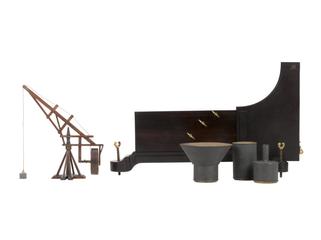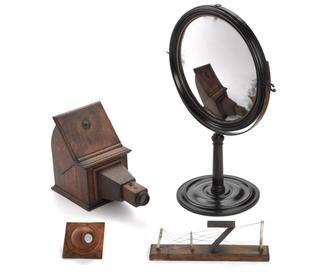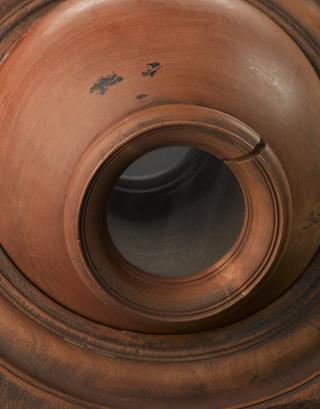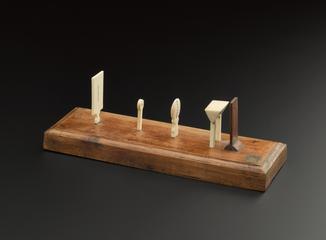






Model of a wharf jib crane, maker unknown, England, 1729-1753. Once belonged to Stephen Demainbray.
The original crane was designed for Mr. Ralph Allen, a quarry owner at Bath, Avon. The rope passes over a vertical pulley and between two horizontal pulleys, the small roof keeps it dry. The gearing enables a large weight to be lifted using little effort and the horizontal pulley allows the arm to be turned easily. This model was used by Stephen Demainbary in his lectures on natural philosophy. Demainbray worked as superintendent at the King's observatory at Kew from 1768 and his collection of instruments and apparatus was absorbed into the King's own collection.
Details
- Category:
- King George III
- Object Number:
- 1927-1928
- Measurements:
-
overall: 195 mm x 355 mm x 190 mm, 0.5 kg
- type:
- model - representation
- copyright:
- Unlinked Name
- credit:
- King's College, London




